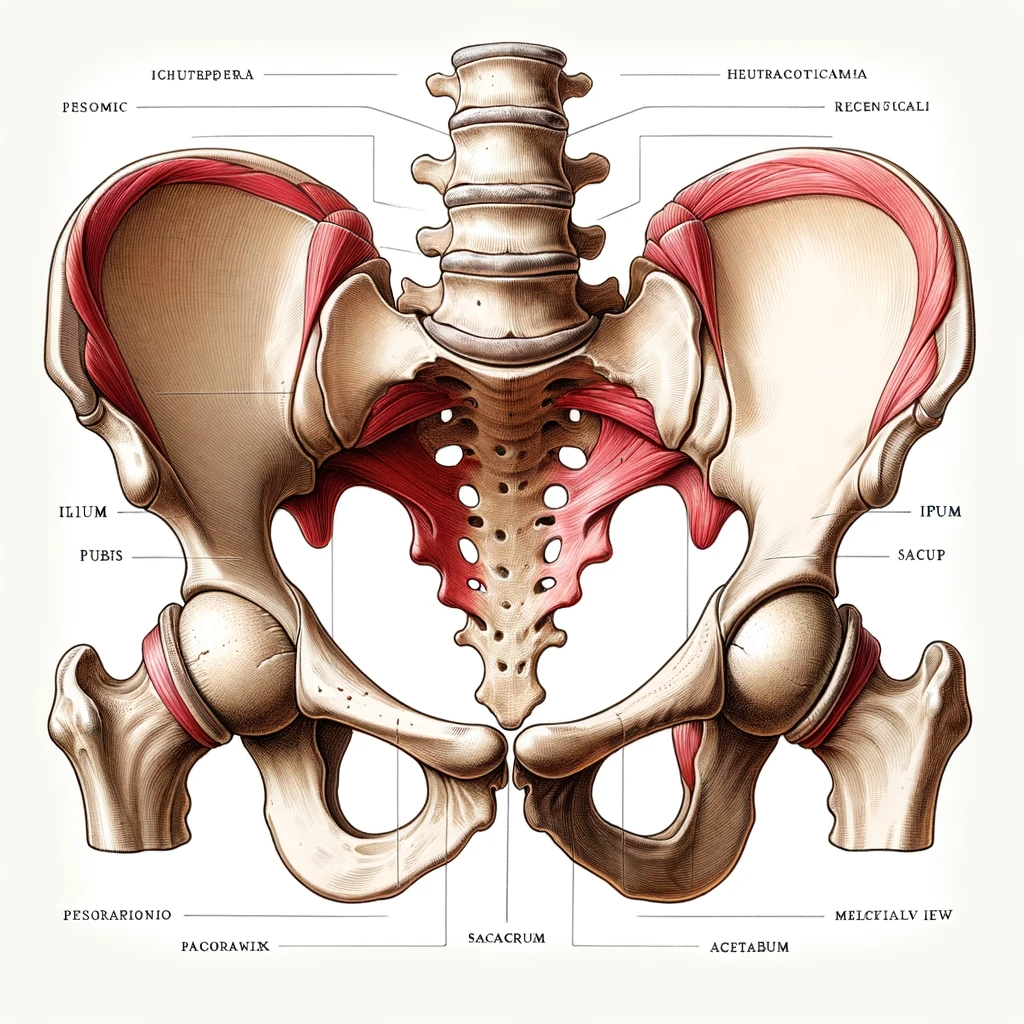2 Most SAQ’s of Musculo Skeletal System Chapter in Inter 2nd Year Zoology (TS/AP)
4 Marks
SAQ-1 : Describe the structure of synovial joint with the help of a neat labelled diagram.
For Backbenchers 😎
Think of your body like a machine with movable parts, like hinges. These hinges are called synovial joints, and they help us move in different ways, like bending our arms or walking.
Now, these joints have a special structure. Imagine them as capsules or protective covers around the moving parts. These capsules keep everything in place and prevent things from popping out.
Inside these capsules, there’s a lining that makes a special fluid, like oil in a machine. This fluid helps the joints move smoothly without any friction, like when you oil a door hinge. It also keeps the joints healthy and clean.
And don’t forget about the cushion! There’s a soft pad called articular cartilage on the ends of the moving parts. It’s like a pillow that makes sure our bones don’t hurt when we move.
Now, there are different types of these joints. Some are like ball-and-socket joints, allowing lots of movement in your shoulders and hips. Others are like door hinges, letting you bend your elbows and knees. There are also joints that let one bone rotate around another, like when you turn your head. Some joints allow bones to slide past each other, like in your wrists and ankles. In your wrist, there’s a special joint that allows different movements, but it can’t rotate. And in your thumb, there’s a joint that lets you do many things with your hand.
So, think of synovial joints as the hinges in your body’s machine. They have capsules, special fluid, and cushions to make sure everything moves smoothly. These joints come in different types, like different kinds of hinges, and they let us do all sorts of movements. Understanding how they work helps us know how our bodies can move and work better.
మన తెలుగులో
మీ శరీరాన్ని కీలు వంటి కదిలే భాగాలతో కూడిన యంత్రంలా భావించండి. ఈ కీలు సైనోవియల్ కీళ్ళు అని పిలువబడతాయి మరియు అవి మన చేతులను వంచడం లేదా నడవడం వంటి వివిధ మార్గాల్లో కదలడానికి సహాయపడతాయి.
ఇప్పుడు, ఈ కీళ్ళు ప్రత్యేక నిర్మాణాన్ని కలిగి ఉన్నాయి. కదిలే భాగాల చుట్టూ వాటిని క్యాప్సూల్స్ లేదా రక్షిత కవర్లుగా ఊహించుకోండి. ఈ క్యాప్సూల్స్ ప్రతిదీ స్థానంలో ఉంచుతాయి మరియు విషయాలు బయటకు రాకుండా నిరోధిస్తాయి.
ఈ క్యాప్సూల్స్ లోపల, ఒక యంత్రంలో నూనె వంటి ప్రత్యేక ద్రవాన్ని తయారు చేసే లైనింగ్ ఉంది. ఈ ద్రవం మీరు డోర్ కీలుకు నూనె వేసేటప్పుడు ఎలాంటి ఘర్షణ లేకుండా కీళ్ళు సాఫీగా కదలడానికి సహాయపడుతుంది. ఇది కీళ్లను ఆరోగ్యంగా మరియు శుభ్రంగా ఉంచుతుంది.
మరియు కుషన్ గురించి మర్చిపోవద్దు! కదిలే భాగాల చివర్లలో ఆర్టిక్యులర్ కార్టిలేజ్ అని పిలువబడే మృదువైన ప్యాడ్ ఉంది. మనం కదిలినప్పుడు మన ఎముకలు గాయపడకుండా చూసే దిండు లాంటిది.
ఇప్పుడు, ఈ కీళ్లలో వివిధ రకాలు ఉన్నాయి. కొన్ని బాల్-అండ్-సాకెట్ కీళ్ల వంటివి, మీ భుజాలు మరియు తుంటిలో చాలా కదలికలను అనుమతిస్తాయి. ఇతరులు మీ మోచేతులు మరియు మోకాళ్ళను వంచడానికి వీలు కల్పిస్తూ తలుపు కీలు లాంటివి. మీరు మీ తలని తిప్పినప్పుడు ఒక ఎముక మరొకదాని చుట్టూ తిరిగేలా చేసే కీళ్ళు కూడా ఉన్నాయి. కొన్ని కీళ్ళు మీ మణికట్టు మరియు చీలమండలలో వలె ఎముకలు ఒకదానికొకటి జారిపోయేలా చేస్తాయి. మీ మణికట్టులో, విభిన్న కదలికలను అనుమతించే ప్రత్యేక ఉమ్మడి ఉంది, కానీ అది తిప్పడం సాధ్యం కాదు. మరియు మీ బొటనవేలులో, మీ చేతితో అనేక పనులు చేయడానికి మిమ్మల్ని అనుమతించే ఉమ్మడి ఉంది.
కాబట్టి, సైనోవియల్ కీళ్లను మీ శరీరం యొక్క యంత్రంలో కీలుగా భావించండి. వారు క్యాప్సూల్స్, ప్రత్యేక ద్రవం మరియు కుషన్లను కలిగి ఉంటారు, ప్రతిదీ సజావుగా కదులుతుంది. ఈ కీళ్ళు వివిధ రకాలైన కీలు వంటి వివిధ రకాలుగా వస్తాయి మరియు అవి అన్ని రకాల కదలికలను చేయడానికి మాకు అనుమతిస్తాయి. అవి ఎలా పని చేస్తాయో అర్థం చేసుకోవడం వల్ల మన శరీరాలు ఎలా కదులుతాయో మరియు మెరుగ్గా పని చేయవచ్చో తెలుసుకోవచ్చు.
Introduction
Synovial joints, also known as diarthrosis, are the most prevalent and movable type of joint in the human body. They are distinguished by a joint cavity containing synovial fluid and are encased by a fibrous synovial capsule. These joints are essential for various body movements and include types like ball and socket, hinge, pivot, gliding, condyloid, and saddle joints.
Structure of a Synovial Joint
- Synovial Capsule: The joint is enclosed in a double-layered synovial capsule. The outer layer is made of dense fibrous irregular connective tissue with collagen fibers, continuous with the periosteum covering the bones. This layer prevents stretching and joint dislocation. Ligaments, formed from membrane fibers, enhance joint strength and stability.
- Inner Layer: The synovial membrane, the capsule’s inner layer, comprises loose connective tissue with elastic fibers, responsible for synovial fluid secretion.
- Synovial Fluid: This viscous fluid, produced by the synovial membrane, contains hyaluronic acid and phagocytic cells. It acts as a lubricant, reducing friction and nourishing the articular cartilage while removing waste.
- Articular Cartilage: The bone ends in a synovial joint are coated with hyaline cartilage, reducing friction and absorbing shock during movement.
Types of Synovial Joints
- Ball and Socket Joint: These joints, like in the shoulder and hip, allow multidirectional movement.
- Hinge Joint: Found in the elbow and knee, they enable primarily one-directional movement.
- Pivot Joint: One bone rotates around another, as seen between the first and second vertebrae of the neck.
- Gliding Joint: Bones glide past each other in these joints, present in wrists and ankles.
- Condyloid Joint: These, like in the wrist, permit flexion, extension, abduction, adduction, and circumduction but not rotation.
- Saddle Joint: Found in the thumb, they allow a wide range of movements.
Summary
Synovial joints are integral to facilitating body movement, characterized by their fluid-filled cavity and synovial capsule. The structure, including articular cartilage and synovial fluid, ensures smooth, frictionless motion, enabling the body’s flexible and diverse movements.
SAQ-2 : Draw a neat labelled diagram of pelvic girdle.

